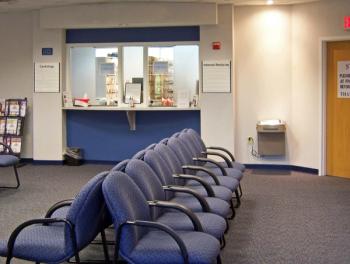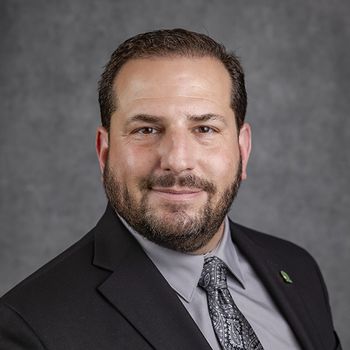
Lilly announces price cuts, $35 price cap on insulin
Insulin is not affordable in current health care system, ‘and that needs to change,’ CEO says.
Pharmaceutical maker
The drug maker announced the move March 1 “to make it easier to access Lilly insulin and help Americans who may have difficulty navigating a complex healthcare system that make keep them from getting affordable insulin.”
Some changes will be effective immediately, while others will roll out at the start of April or May. Lilly Chair and CEO David A. Ricks called on the industry and lawmakers to join the effort.
"While the current health care system provides access to insulin for most people with diabetes, it still does not provide affordable insulin for everyone and that needs to change," Ricks said in a
“Because these price cuts will take time for the insurance and pharmacy system to implement, we are taking the additional step to immediately cap out-of-pocket costs for patients who use Lilly insulin and are not covered by the recent Medicare Part D cap," Ricks said.
Quick reaction
Amercian Diabetes Association (ADA) CEO Charles “Chuck” Henderson said the organization will continue its mission to ensure people with diabetes have access to care they need.
“We applaud Eli Lilly for taking the important step to limit cost-sharing for its insulin, and we encourage other insulin manufacturers to do the same,” Henderson said in a news release.
“While we have been able to help achieve significant progress on the issue of insulin affordability, including Medicare’s new out-of-pocket cost cap on insulin, state copay caps, and patient assistance developments from insulin manufacturers, we know that our work is not done,” Henderson said. “We will work to ensure that Eli Lilly’s patient assistance program is benefiting patients as intended and continue the fight so that everyone who needs insulin has access.”
National action
The move follows congressional and presidential action last year to pass the Inflation Reduction Act (IRA) economic bill that included a $35 per month cap on out-of-pocket costs for insulin in Medicare Part D. That limit started Jan. 1, and a similar cap will take effect July 1 for Medicare Part B.
The administration of President Joe Biden has touted the
"We are driving for change in repricing older insulins, but we know that seven out of 10 Americans don't use Lilly insulin. We are calling on policymakers, employers, and others to join us in making insulin more affordable," Ricks said.
"For the past century, Lilly has focused on inventing new and improved insulins and other medicines that address the impact of diabetes and improve patient outcomes,” Ricks said in the news release. Our work to discover new and better treatments is far from over. We won't stop until all people with diabetes are in control of their disease and can get the insulin they need."
On Feb. 28, the day before the Lilly announcement, the president mentioned the IRA insulin price changes in his remarks to a crowd in Virginia Beach, Virginia. Insulin has been around for 100 years and costs about $10 to make and $13 to package, but sells for hundreds.
“Let’s
Details available
Lilly published this list of insulins and prices:
- Cutting the list price of its non-branded insulin, Insulin Lispro Injection 100 units/mL, to $25 a vial. Effective May 1, it will be the lowest list-priced mealtime insulin available, and less than the price of a Humalog® vial in 1999, according to the company.
- Cutting the list price of Humalog® (insulin lispro injection) 100 units/mL, Lilly's most commonly prescribed insulin, and Humulin® (insulin human) injection 100 units/mL by 70%, effective in the fourth quarter of 2023.
- Launching RezvoglarTM (insulin glargine-aglr) injection, a basal insulin that is biosimilar to, and interchangeable with, Lantus® (insulin glargine) injection, for $92 per five pack of KwikPens®, a 78% discount to Lantus, effective April 1.
- Effective immediately, Lilly will automatically cap out-of-pocket costs at $35 at participating retail pharmacies for people with commercial insurance using Lilly insulin.
- People who don't have insurance can continue to go to
InsulinAffordability.com and immediately download the Lilly Insulin Value Program savings card to receive Lilly insulins for $35 per month.
Additional details about the purpose and safety of the drugs are available online.
ADA also has the website
This time, it looks real
The March 1 announcement appeared as an official news release on
Last year, Lilly and insulin prices made headlines around the Internet and the nation when a parody account on social media website Twitter announced, “We are excited to announce insulin is free now.”
The bogus proclamation looked real, and it touched off debates about insulin and prescription drug prices, and about the verification process used to vet users on Twitter, which was freshly under the leadership of billionaire Elon Musk. Lilly’s real official Twitter account issued on online correction and apology, while other users pilloried the company for its pricing practices and Twitter for selling “verified” status to unconfirmed users. In real life, Lilly’s stock price dropped 4.37% due to the situation, according to a
Newsletter
Stay informed and empowered with Medical Economics enewsletter, delivering expert insights, financial strategies, practice management tips and technology trends — tailored for today’s physicians.















